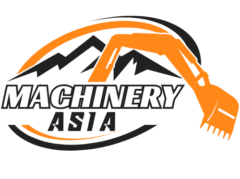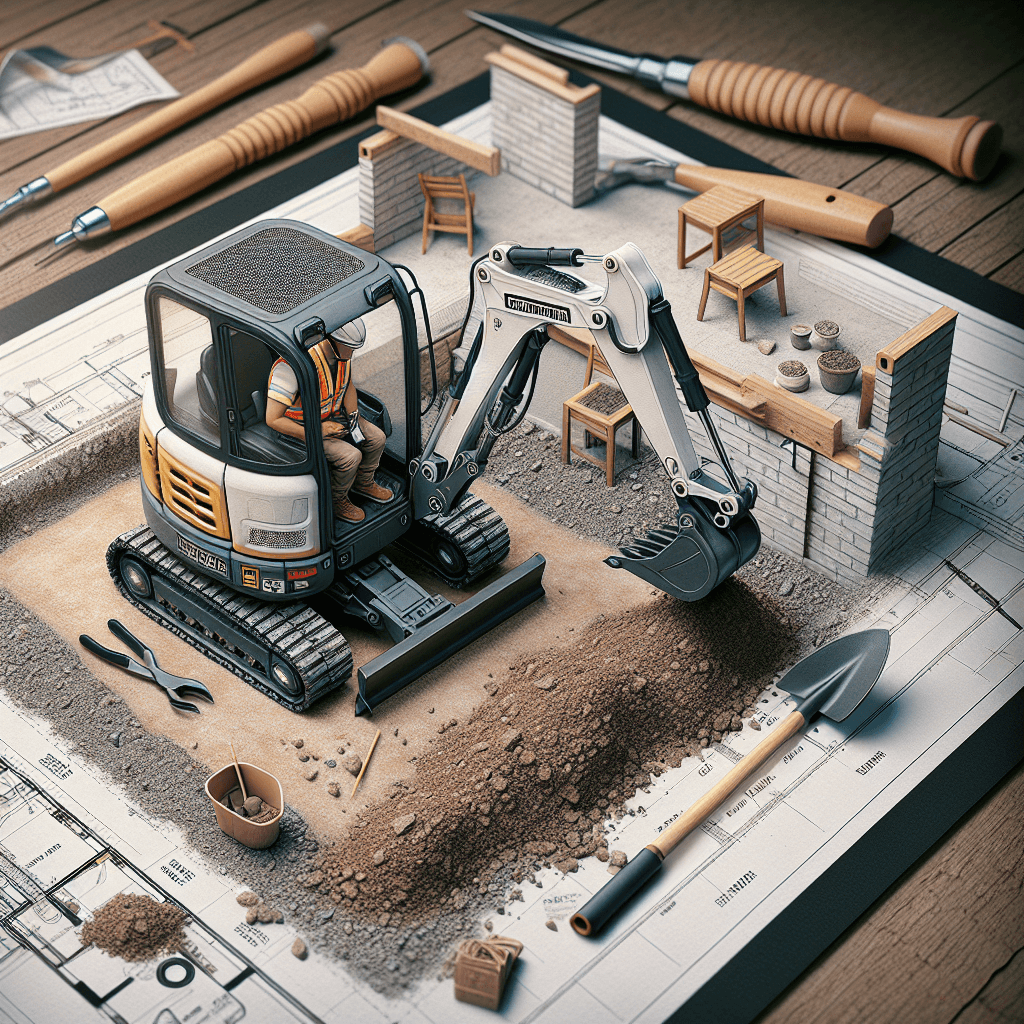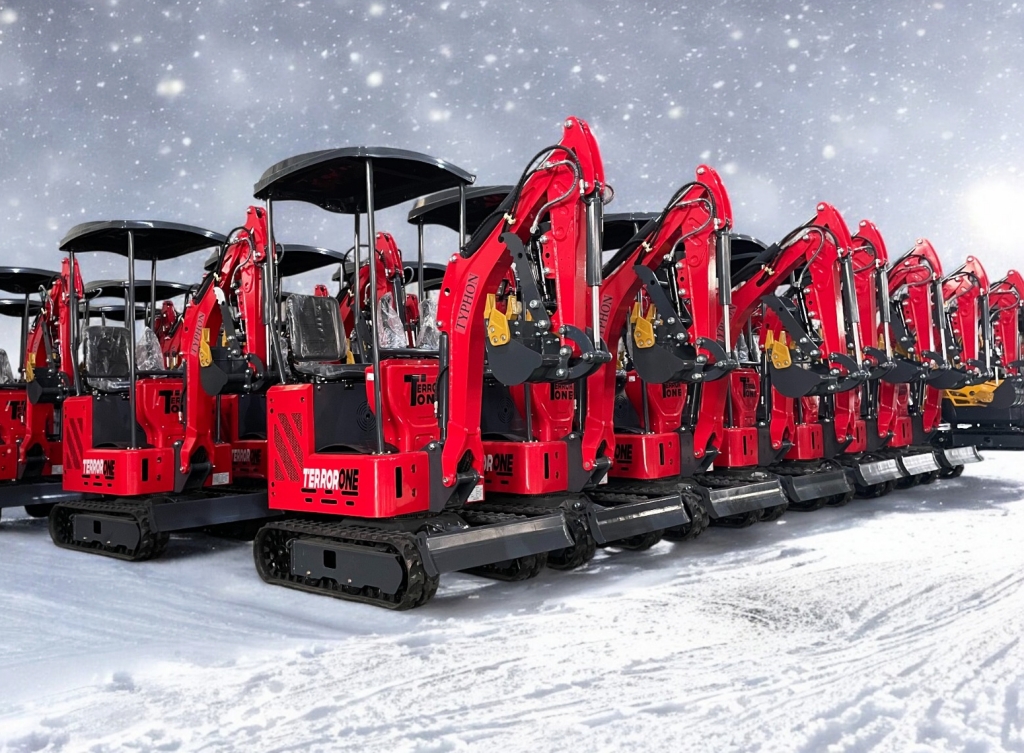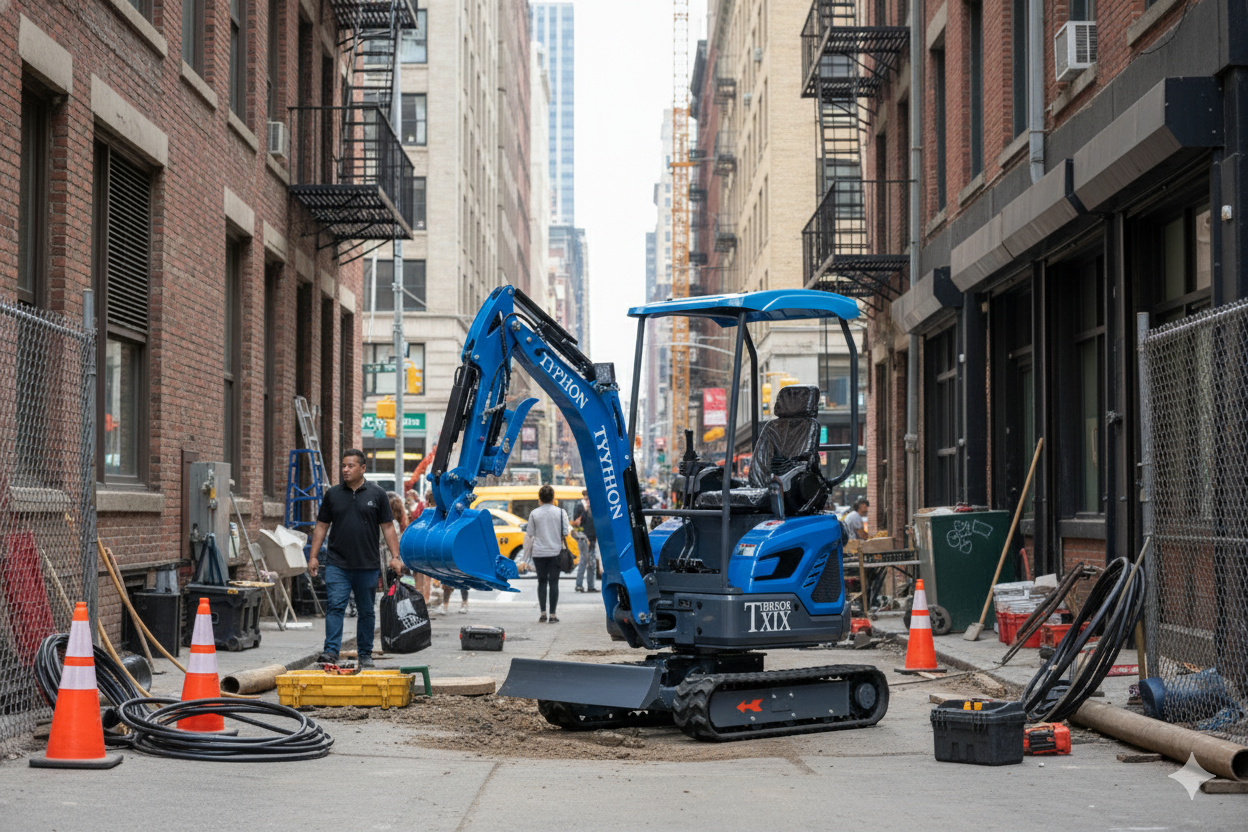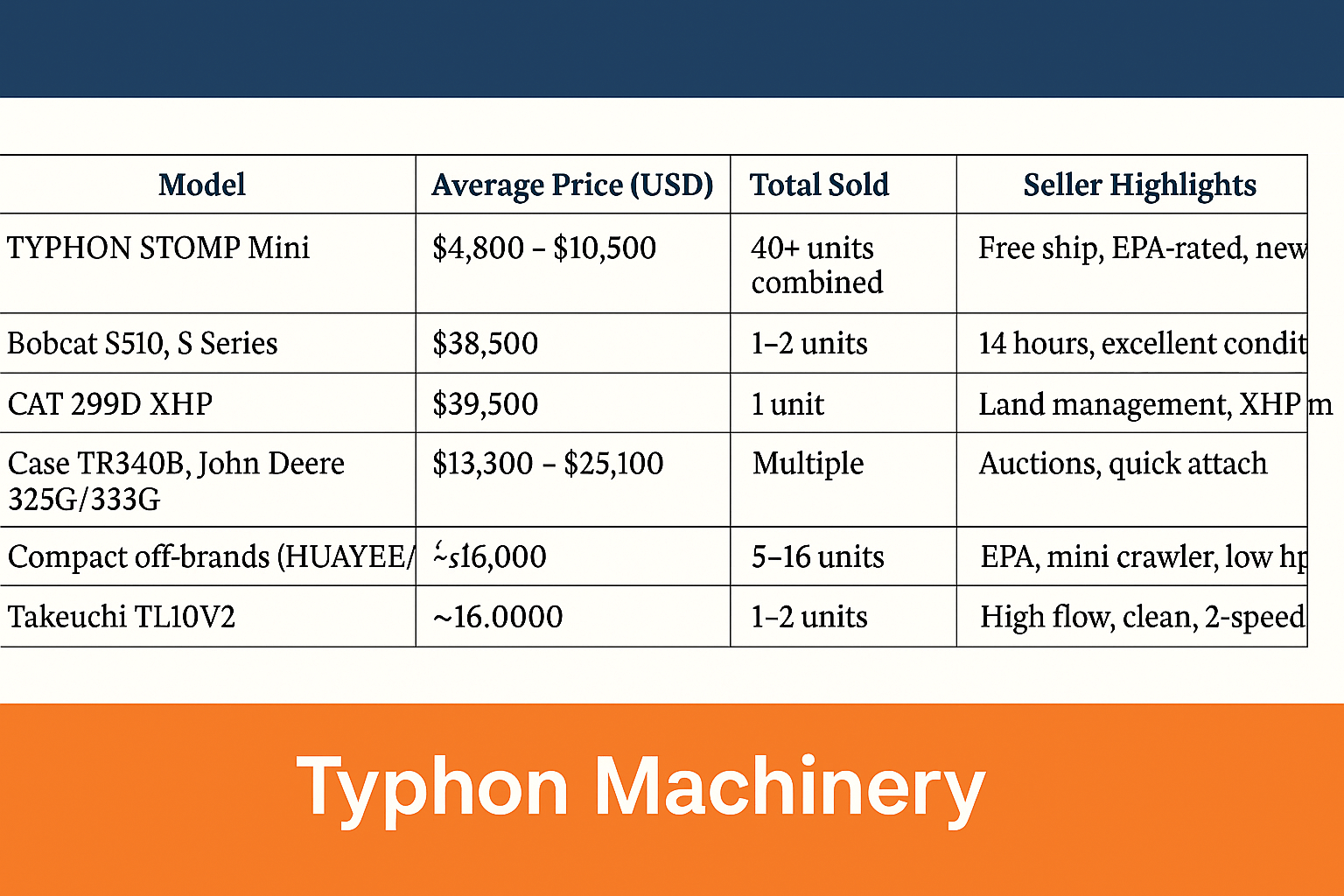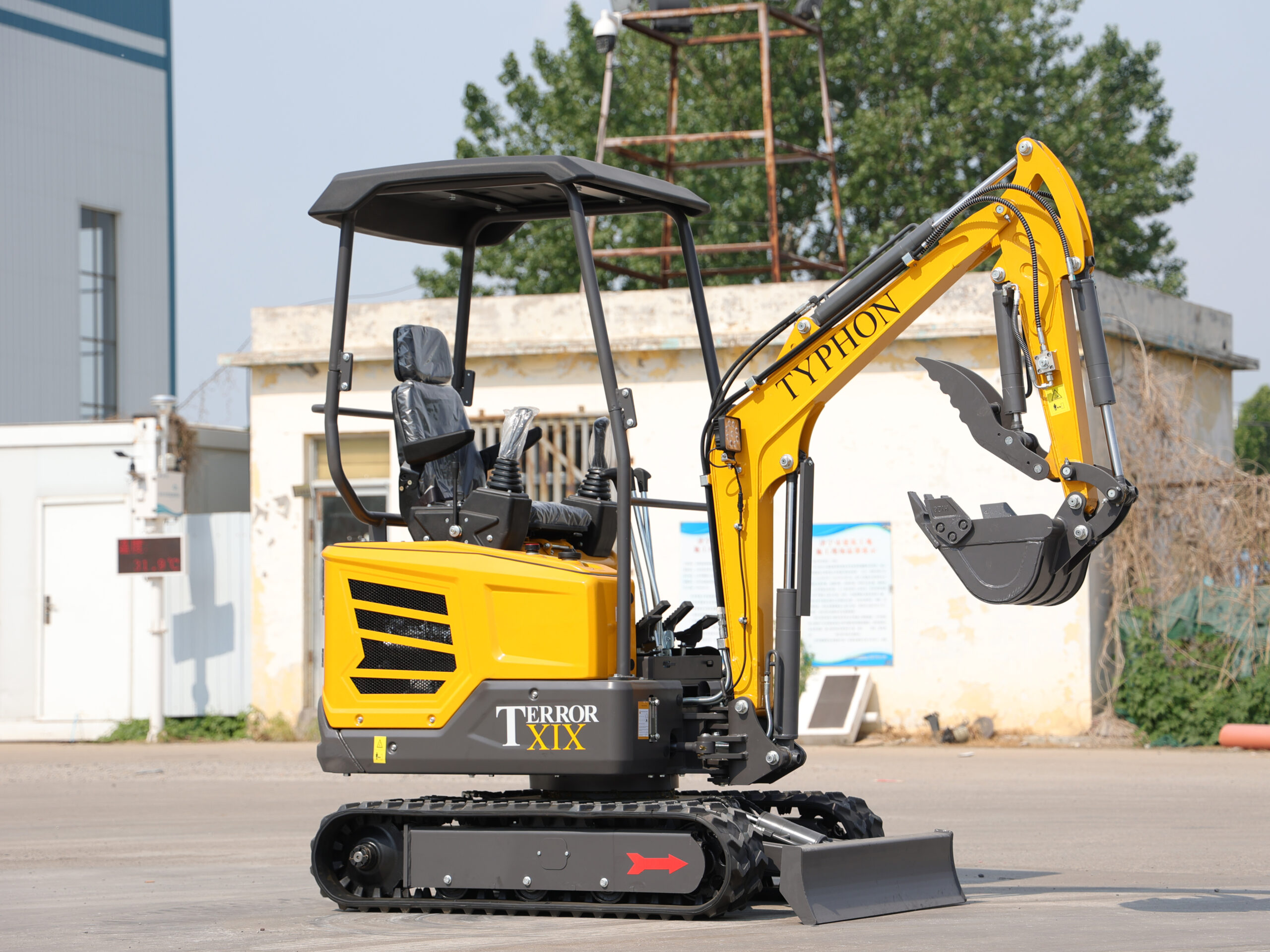Mini excavators. These mighty machines are revolutionizing how we approach everything from backyard projects to large-scale construction and landscaping tasks. Despite their small size, mini excavators pack a powerful punch, making them an essential tool for both beginners and seasoned professionals.

In this comprehensive guide, we’ll explore everything you need to know about mini excavators. We’ll cover their benefits, safety tips, practical uses for DIY enthusiasts, and professional applications in construction and landscaping. By the end, you’ll be equipped with all the information you need to take on your next project confidently.
Table of Contents
ToggleWhat is a Mini Excavator Used For?

Mini excavators are versatile machines that can tackle a wide variety of tasks, depending on their size and attachments. They are predominantly employed for digging, trenching, backfilling, leveling, grading, and even small-scale drilling. One of the most common applications is in residential settings, where mini excavators are ideal for excavating in-ground pools or hot tubs, even in tight backyards. Their precision handling, robust power, and excellent mobility make them the go-to choice for homeowners and professionals alike.
Operators appreciate the ability of mini excavators to manoeuvre into compact spaces near existing structures, allowing for efficient dirt movement—particularly crucial when repairing sewage lines. Post-repair, these machines can restore the yard’s level using various attachments, such as dozer blades. The efficiency and productivity of a mini excavator far surpass traditional hand shoveling, significantly reducing project completion time. Additionally, these machines excel in digging holes for tree transplanting and can safely remove larger trees with the right attachments.
In demolition scenarios, mini excavators prove to be far more effective than hand tools for dismantling smaller structures like sheds. Their compact size allows them to navigate narrow paths, gaining access to otherwise challenging job sites. Landscape maintenance is another area where mini excavators shine; tasks like digging ditches for irrigation or planting can be accomplished swiftly and efficiently, minimizing disturbance to the soil and existing vegetation. Overall, the functionality and adaptability of mini excavators make them an indispensable asset for both DIY enthusiasts and professional contractors.
Understanding Mini Excavators
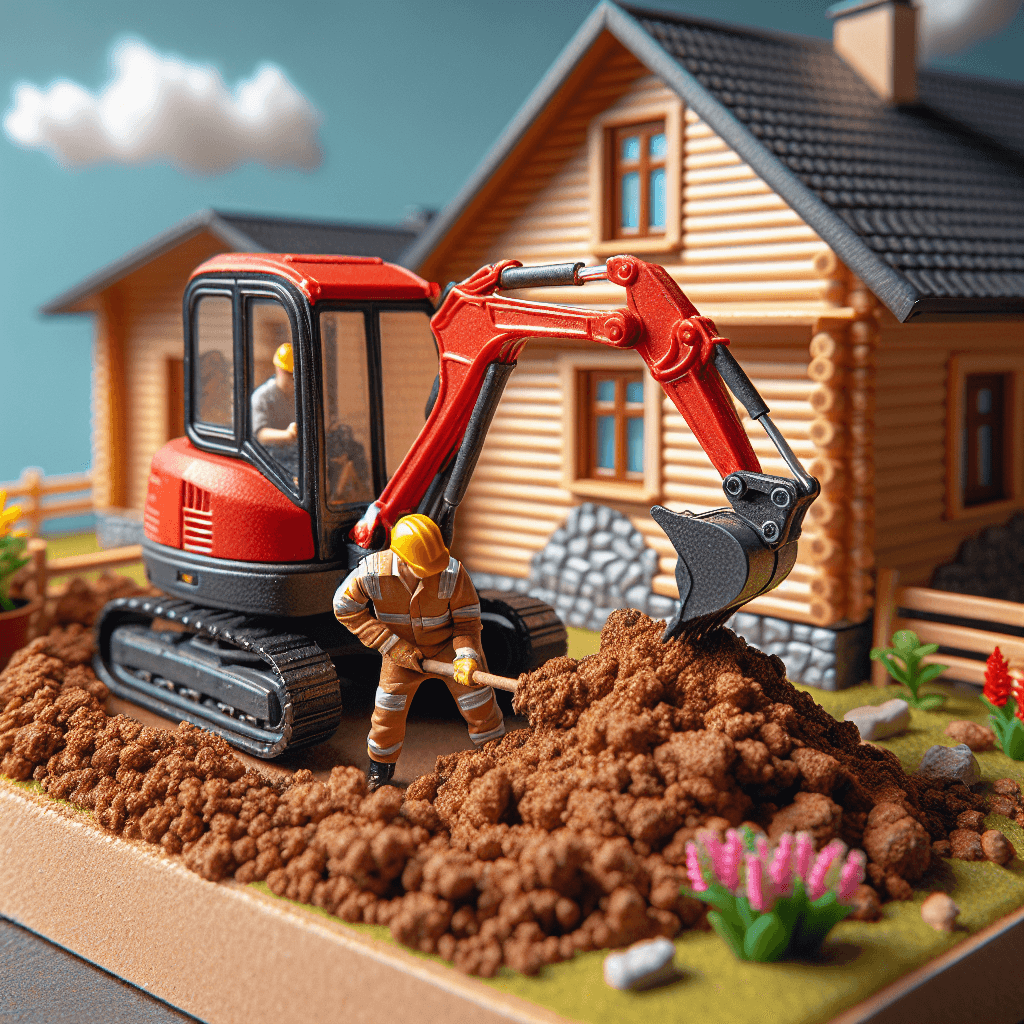
Mini excavators are versatile, compact machines designed for excavation and various other tasks. Although they’re smaller than standard excavators, they offer impressive power and maneuverability, making them ideal for tight spaces and intricate jobs.
These machines are equipped with a boom, dipper, and bucket, allowing them to dig, lift, and move earth and materials efficiently. Their compact size makes them popular for residential projects, fitting into spaces inaccessible to larger equipment.
Mini excavators are also environmentally friendly. They consume less fuel than their larger counterparts, reducing emissions and operating costs. With technological advancements, today’s models are even more efficient and user-friendly, making them an excellent choice for a wide range of projects.
How Does a Mini Excavator Work?
Many construction operations are more productive and safe when performed using mini excavators. Their compact size enables swift movement into tight spaces, expediting various tasks. Below are a few key steps to operate a mini excavator effectively:
- Inspect the Machine: Before operating, conduct a thorough inspection of the mini excavator. Check fluid levels, inspect the tracks for wear, and ensure all controls are functioning correctly. Safety is paramount.
- Familiarize with Controls: Before operating, ensure you know the position and purpose of each control. The controls typically include joysticks for digging and lifting, pedals for tracks, and switches for additional features like lights or attachments. Never alter the way the control lever is used, as failing to do so may result in machine malfunction.
- Position the Excavator: Position the mini excavator optimally for the task at hand. Ensure that the machine is level and stable to maintain control during operation.
- Use Proper Techniques: When excavating grooves next to walls or roadsides, run the machine effectively using the boom swing feature, operated by the boom-swing pedal on the operator’s right foot. Use the lever on the operator’s right side to raise and lower the blade; remember that this lever returns to neutral when released, keeping the blade in place until pressed again.
- Attach Appropriate Tools: Depending on the job, select the right attachments, such as buckets for digging or blades for grading. Familiarity with the attachments enhances productivity and efficiency.
- Monitor Surroundings: Always be aware of your surroundings and potential hazards. Maintain a safe distance from overhead cables, other workers, and obstacles to ensure a secure work environment.
- Pilot Control Shut-Off Lever: The purpose of the pilot control shut-off lever is to prevent machine malfunction if the control levers are unintentionally changed when the operator exits or enters the cab. The console latch mechanism is linked to the pilot control shut-off lever for easier access during maintenance.
- Parking and Shutdown: Park the machine on a firm, level surface. Lower the bucket and blade to the ground, return all control levers to neutral, properly shut down the engine, pull the pilot control shut-off lever, and raise the console to the full lock position.
- Hydraulic Oil Temperature: The standard operating temperature of hydraulic oil is between 50 and 80 °C (122 and 176 °F). Running the machine with hydraulic oil below 20 °C (68 °F) can cause substantial damage. Follow warm-up methods until the hydraulic oil temperature exceeds 20 °C (68 °F).
- Operating the Backhoe: Use the right arm and bucket for work. Pull the bucket toward the machine using the arm as the main digging force. If soil sticks to the bucket, remove it by moving the arm and bucket back and forth. When trenching, keep the tracks parallel to the trench and avoid bottoming the cylinder to prevent damage.
- Grading Operations: Use the blade for soil refilling and general grading after excavation. Grading can also be performed by operating the boom, arm, and bucket simultaneously. When grading, roll in the arm while slightly raising the boom, and avoid traveling while thrusting the bucket teeth into the ground, as this may cause severe damage.
By adhering to these operational guidelines, not only can operators maximize the efficiency of their mini excavators, but they can also ensure a safer working condition on the job site.
The Benefits of Using a Mini Excavator
One of the most significant advantages of mini excavators is their versatility. These machines can perform a multitude of tasks, from digging trenches to demolishing structures. Whether you’re a DIY enthusiast or a professional, a mini excavator can streamline your work and save you time.
Another benefit is their ease of use. Many models come with intuitive controls, making them accessible even to those with minimal experience. Plus, their compact design allows for easy transport and storage, which is ideal for those who need to move between job sites frequently.
Additionally, mini excavators are cost-effective. They typically have lower maintenance costs and fuel consumption than larger equipment, making them a budget-friendly choice for many projects. Their affordability allows even small-scale operators to access powerful machinery without breaking the bank.
How to Dig with a Mini Excavator?
Operators must first be familiar with the equipment and its capabilities before undertaking any digging operation with a mini excavator. One of the most significant errors a user can make is pushing a mini excavator beyond its limits. To ensure efficient operation, digging should involve accurate and smooth cuts, avoiding excessive force that can lead to equipment strain. Operators should be mindful of the hydraulics; pushing them too hard to relieve pressure can stall the work equipment, effectively wasting both fuel and energy. When preparing to dig, position the equipment at a productive height for material loading, ideally matching the bench height to that of the sideboards on the haul truck. Most experts recommend orienting the left side of the machine towards the truck to create the optimal loading angle and visibility. Furthermore, it’s essential for operators to recognize that digging techniques may vary considerably based on the specific project or application, necessitating a nuanced understanding of the task at hand.
Advantages of a Mini Excavator
Mini excavators have become increasingly popular over the past decade due to their versatility for various projects. Despite their small size, they pack a punch, handling tasks like trenching, grading, site prep, and landscaping with ease. Their ability to fit into tight spaces makes them perfect for urban and residential jobs where larger machines can’t go.
These machines are also fuel-efficient, helping to cut costs while delivering high performance. They’re user-friendly, so both pros and beginners can operate them confidently without needing specialized training.
Unlike traditional hydraulic excavators, which struggle in confined areas, mini excavators shine with features like zero tail swing or short tail design, making them agile in tight spots.
Transporting them is hassle-free too; they easily fit in pickup truck trailers or extended beds, minimizing logistics headaches.
Don’t let their size fool you; mini excavators can swing 360 degrees and load dump trucks without rearranging them.
They’re cost-effective for small to medium projects, providing excellent results without straining your budget. With lower fuel consumption and reduced wear and tear, they save on maintenance costs, too.
Additionally, mini excavators operate quietly, making them ideal for any job site without causing disruption.
Safety Precautions and Operating Basics
Safety should always be a top priority when operating a mini excavator. Before starting any work, it’s crucial to familiarize yourself with the machine’s controls and safety features. This includes understanding the emergency shut-off functions and wearing appropriate personal protective equipment (PPE) such as helmets and steel-toed boots.
Ensure the work area is free of obstructions and hazards that could cause accidents. Conduct a thorough site assessment, looking for underground utilities and overhead lines that could pose risks during operation. Knowing the terrain and soil conditions will help you plan your tasks safely.
When operating the excavator, maintain a stable posture and avoid sudden movements. Always follow the manufacturer’s guidelines and never exceed the machine’s load capacity. Regularly check the hydraulic systems, tracks, and attachments to ensure everything is functioning correctly, preventing potential accidents.
Practical Uses for DIY Projects
Mini excavators open up a world of possibilities for DIY enthusiasts. From building garden beds to creating ponds, these machines can tackle various projects around the home. Their precision and power make them perfect for tasks that require detailed digging and earthmoving.
For those looking to install a new patio or driveway, mini excavators simplify the process. They can efficiently remove topsoil and prepare the ground, ensuring a level surface for laying materials. With the right attachments, you can switch from digging to grading or even compacting the soil.
Landscaping projects also benefit from mini excavators. Whether you’re planting trees, constructing retaining walls, or creating drainage systems, these machines provide the muscle you need with the finesse required for delicate tasks. Their ability to maneuver in confined spaces makes them invaluable for transforming your outdoor space.
Professional Applications in Construction and Landscaping
In the professional realm, mini excavators are indispensable tools for construction and landscaping. Their compact size allows them to perform tasks in urban environments where space is limited, such as digging foundations, trenches, or utility lines without disrupting surrounding areas.
Landscapers often rely on mini excavators for sculpting terrain and installing water features. Their versatility allows them to switch between tasks quickly, optimizing workflow and enhancing productivity. Attachments like augers and thumbs further expand their capabilities, handling everything from drilling holes to grabbing materials.
Contractors appreciate mini excavators for their efficiency and reliability. These machines can operate in various conditions, from soft soil to rocky terrain, making them suitable for diverse projects. Their durability ensures they withstand the rigors of daily use, providing consistent performance over time.
Maintenance Tips for Keeping Your Mini Excavator in Top Condition
Regular maintenance is key to keeping your mini excavator in peak condition. Start with daily inspections, checking fluid levels, tracks, and attachments. Ensure all components are lubricated and free of debris to prevent wear and tear.
Schedule routine servicing according to the manufacturer’s recommendations. This includes oil changes, filter replacements, and hydraulic system checks. Regular maintenance not only extends the life of your machine but also ensures it operates safely and efficiently.
Don’t overlook the importance of proper storage. When not in use, keep the excavator in a sheltered area to protect it from the elements. Taking these steps will help you avoid costly repairs and ensure your machine is ready to tackle any project at a moment’s notice.
Mini Excavator Specifications
Mini excavators are primarily categorized by their operating weight, typically falling into two main ranges: 2 to 2.3 tons and 3 to 3.3 tons. A key specification to consider is the engine horsepower, which varies across different models, impacting their performance capabilities. The hydraulic system is a crucial component, as it powers the engine and enables efficient operation.
The front assembly of a mini excavator typically includes a boom, arm, and bucket, which are essential for various digging and lifting tasks. These machines are designed with user safety in mind, featuring a canopy or cabin equipped with a lock lever, ensuring safe operation. Control is achieved through two joysticks that maneuver the boom, arm, and bucket, while two pedals facilitate movement of the excavator itself. Additional features include a dozer blade, operated by a small joystick, a boom swing pedal for enhanced versatility, and a robust undercarriage that provides stability. With a diverse array of optional attachments available, mini excavators are both versatile and uniquely suited to tackle a wide range of projects, making them invaluable tools in various settings.
Conclusion and Additional Resources
Mini excavators are powerful allies for both DIY enthusiasts and professionals. Their versatility, efficiency, and ease of use make them an invaluable asset for a wide range of projects. By understanding their capabilities, adhering to safety protocols, and maintaining them properly, you can maximize their benefits and enhance your work.
For those eager to explore further, numerous resources and communities are available to help you get the most out of your mini excavator. Whether you’re seeking tutorials, forums, or expert advice, you’ll find a wealth of information to support your endeavors.
Ready to take the plunge? Incorporating a mini excavator into your toolkit could be the key to unlocking new possibilities and elevating your projects to the next level.
